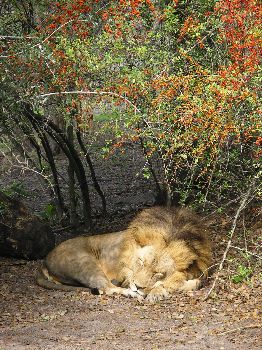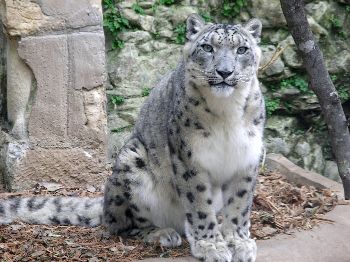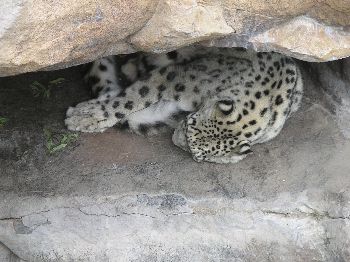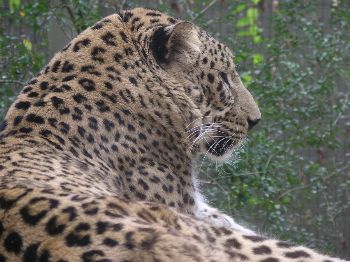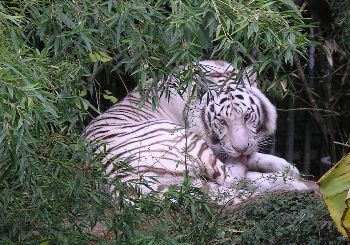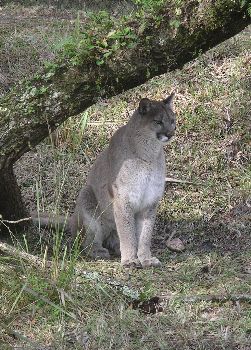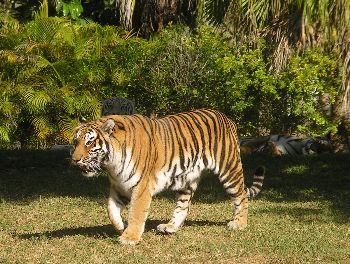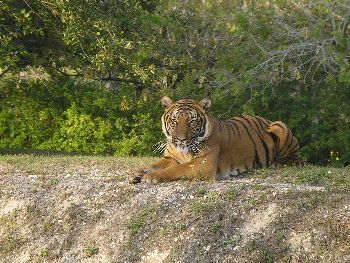The images presented in these galleries are reductions of photos taken by Valerie with a Pentax Optio 450 digital camera. The compression has been increased to 80% (100%=no compression) and the dimensions reduced in order to save bandwidth and facilitate page loading. The information below each image gives the size in pixels and kilobytes of the original file as well as the title by which to request the larger version. All of the original files are in jpeg format, most at about 95% compression, and are suitable for printing, desktop wallpaper, or detailed study. While the images here are free for the taking (right click - save as; do not link to these images directly), the larger versions are also available by sending a request to Valerie via . The frames around the gallery photos are not part of the same file and are only for presentation on this site.
Although the photos are free to use, they are copyrighted by LARVALBUG and remain the property of the owners of this site. We request that any public use of these images be accompanied by a credit to LARVALBUG.COM and, when appropriate, a link to our site (<a href="http://www.larvalbug.com/">LARVALBUG</a>). Commercial use of the large files can be arranged for a modest fee.
To request larger files or ask any questions please send an e-mail to Valerie at .
|
|
Big Cats, family Felidae. In keeping with proper usage, only some of the animals pictured on this page are really considered Big Cats (genus Panthera). However, all the cats included are definitely bigger than your average house cat. When I visit zoos, I have mixed feelings about the animals in captivity. I do enjoy getting a chance to see creatures that I otherwise would never encounter. However, while the needs of some animals, such as reptiles, small mammals, and even large herbivores such as zebra, can be satisfactorily accommodated, there are other residents for which confinement in a zoo is simply a prison sentence. Even in zoos where a great deal of effort is made to ensure that the animals are as comfortable as possible, some inhabitants, including the apes, elephants, and large carnivores, almost always show signs of boredom, stress, or neurotic behaviors.
Female Lion (Panthera leo). Cameron Park Zoo, Waco, Texas. Although Waco has a small zoo, it is one of the most pleasant that I've visited. Recently completely renovated, the small collection of animals all have attractive habitats and viewing is excellent. The lions' enclosure included large Plexiglas windows where the cats sometimes interact with the people on the other side. Although my little digital camera has never bothered them, I was once casually "attacked" by a lioness who didn't like the look of my 35mm lens near the window. She had sneaked up from the side so I didn't even notice her behavior until it was too late. It is rather startling to have a cat stand up and reach taller than my head.
Male Lion. Jacksonville Zoo, Florida. The lions at this zoo have a habitat big enough that they can disappear from view, even with an elevated walkway and other vantage points. This photo was taken in February, and the pyracantha berries added nice color on a very cold and blustery day.
Jaguar (Panthera onca). San Antonio Zoo, Texas. The largest cat in the Americas, the jaguar very occasionally crosses into the U.S. from Mexico. The San Antonio Zoo is rather old and the enclosures are mostly small cages. This animal was pacing, a common behavior of large cats in zoos, especially when the weather is cooler.
Snow Leopard (Panthera uncia). San Antonio Zoo, Texas. Also known as the Ounce, the snow leopard has one of the thickest and most luxurious coats of any animal. In spite of this zoo's age and general need of renovation, some of the enclosures have been improved. During cold weather, this animal was watching her two offspring rambunctiously playing in front of a large viewing window.
Snow Leopard. Como Zoo, St. Paul, Minnesota. The zoo at Como Park is rather old and small, but effort is made to give the animals adequate habitats in spite of the limited space available. The zoo wisely has only a small selection of animals which can then receive the care and attention they require.
Amur Leopard (Panthera pardus orientalis). Lowry Park Zoo, Tampa, Florida. One of seven subspecies of leopard, the Amur is native to Northern China and Korea. This cat was photographed in the winter, which accounts for its thick, light-colored coat. The Lowry Park Zoo has excellent habitats for its animals and offers visitors great views.
White Indian Tiger (Panthera tigris). Audubon Zoo, New Orleans, Louisiana. The largest of all cats, tigers are divided into eight subspecies, three of which are now extinct. The Indian, or Bengal, tiger is the most common, and the white color mutation is rare but very popular in zoos. This tiger's enclosure was so big and well-forested that it was almost like glimpsing the animal out in the wild.
Cheetah (Acinonyx jubatus). Jacksonville Zoo, Florida. Alone in its own genus, the cheetah has some unique adaptations for speed. It's head is small, legs long, claws are left exposed at all times, and its upper canines are comparatively small to accommodate a large nasal passage. Cheetahs are the fastest land animals but they are sprinters, and cannot maintain a fast speed for long. This animal had a large enclosure, a good portion of which it was relentlessly pacing during a very cold winter day.
Another view of the same animal.
Cougar (Felis concolor). Homosassa Springs Wildlife State Park, Florida. Also called Puma, Panther, and Mountain Lion, the cougar is the largest cat in the U.S. and ranges all the way through North and South America. The Florida Panther is an endangered subspecies. The animals at Homosassa are all native (except for a hippopotamus left over from when the park was privately owned) and most have been injured or in some way are unable to survive in the wild. While the big attraction at Homosassa Springs is the manatee viewing area, there is also a sizeable collection of other Florida wildlife.
Cougar with a Great Blue Heron carcass. While I was visiting the park, one of the pair of cougars caught a wild heron that ventured a bit too close to the big cat. It spent a long time plucking and nibbling at its prize before carrying it off to a secluded and less visible corner of its enclosure.
Indian Tiger (Panthera tigris). Miami Zoo, Florida. Another zoo with adequate facilities for big cats, this one gives their tigers a large area in which to roam. A facsimile Indian palace ruin adds a photogenic backdrop from one vantage point, and the tigers can be seen from several angles around their enclosure.
Another one of the Miami Zoo's tigers. While the preceeding photo was taken early in the day, while the cats were fairly active, this one was taken just before the zoo closed in the late afternoon.
|

